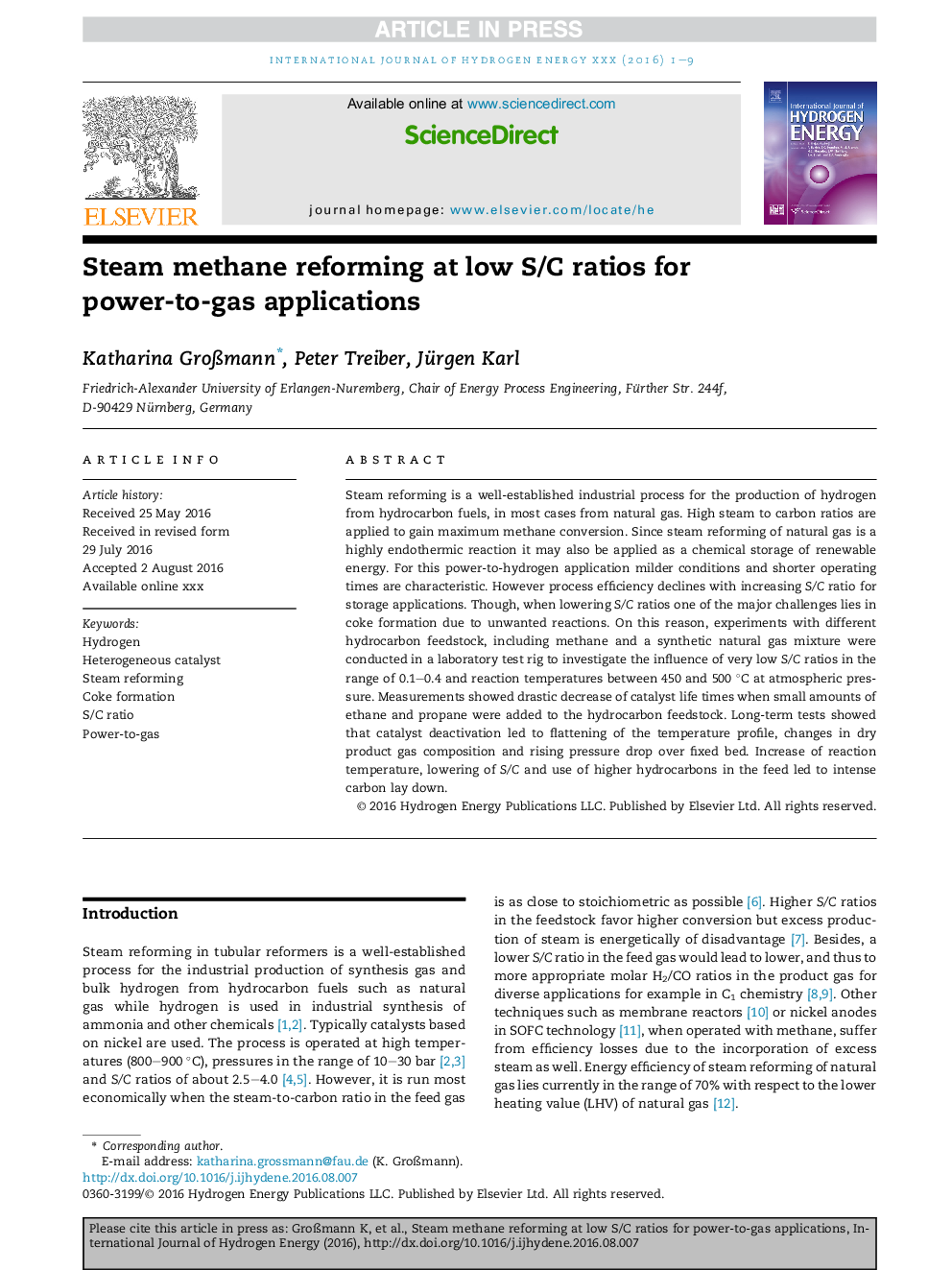| Article ID | Journal | Published Year | Pages | File Type |
|---|---|---|---|---|
| 5147524 | International Journal of Hydrogen Energy | 2016 | 9 Pages |
Abstract
Steam reforming is a well-established industrial process for the production of hydrogen from hydrocarbon fuels, in most cases from natural gas. High steam to carbon ratios are applied to gain maximum methane conversion. Since steam reforming of natural gas is a highly endothermic reaction it may also be applied as a chemical storage of renewable energy. For this power-to-hydrogen application milder conditions and shorter operating times are characteristic. However process efficiency declines with increasing S/C ratio for storage applications. Though, when lowering S/C ratios one of the major challenges lies in coke formation due to unwanted reactions. On this reason, experiments with different hydrocarbon feedstock, including methane and a synthetic natural gas mixture were conducted in a laboratory test rig to investigate the influence of very low S/C ratios in the range of 0.1-0.4 and reaction temperatures between 450 and 500 °C at atmospheric pressure. Measurements showed drastic decrease of catalyst life times when small amounts of ethane and propane were added to the hydrocarbon feedstock. Long-term tests showed that catalyst deactivation led to flattening of the temperature profile, changes in dry product gas composition and rising pressure drop over fixed bed. Increase of reaction temperature, lowering of S/C and use of higher hydrocarbons in the feed led to intense carbon lay down.
Related Topics
Physical Sciences and Engineering
Chemistry
Electrochemistry
Authors
Katharina GroÃmann, Peter Treiber, Jürgen Karl,
